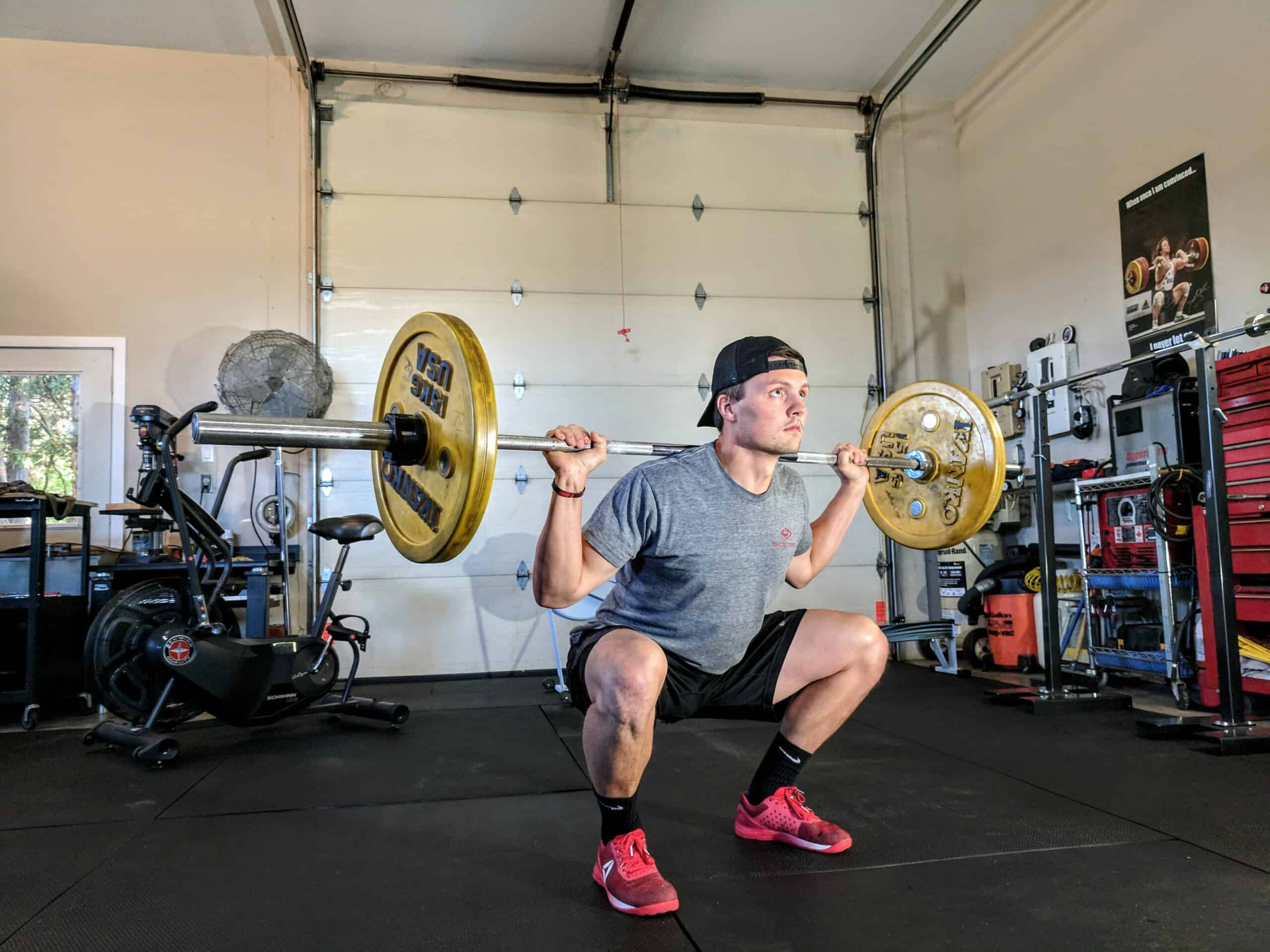Embark on a transformative journey with our comprehensive weight lift routine guide, empowering you to sculpt your physique, enhance strength, and unlock your fitness potential.
Delve into the intricacies of weight lifting, from understanding different routines to designing a personalized plan that aligns with your goals. Discover the significance of nutrition, avoid common pitfalls, and witness the remarkable results of progression and periodization.
Types of Weight Lifting Routines
Weight lifting routines vary based on specific goals, such as building strength, increasing muscle mass, or enhancing power. Each routine involves different exercises, sets, repetitions, and rest periods.
Obtain access to off grid systems uk to private resources that are additional.
Strength Training
Strength training focuses on developing maximal strength by lifting heavy weights for a low number of repetitions (1-5) with extended rest periods (2-5 minutes). Examples include the barbell back squat, bench press, and deadlift.
Hypertrophy
Hypertrophy training aims to increase muscle mass by lifting moderate weights for a higher number of repetitions (8-12) with shorter rest periods (30-60 seconds). Exercises include the dumbbell curl, lateral raise, and leg press.
Powerlifting
Powerlifting emphasizes explosive power by lifting the heaviest weight possible for a single repetition. It involves the squat, bench press, and deadlift. Powerlifting routines typically involve a combination of strength and hypertrophy training.
Designing a Personalized Weight Lifting Routine
Creating a personalized weight lifting routine is crucial for maximizing results and achieving your fitness goals. This involves setting specific goals, determining appropriate weights, choosing exercises that target your desired muscle groups, and incorporating rest and recovery into your plan.
Discover the crucial elements that make grape solar kits the top choice.
Setting Goals
Clearly define your fitness objectives, whether it’s building muscle, losing weight, or improving strength. Specific, measurable, achievable, relevant, and time-bound (SMART) goals provide a clear roadmap for your routine.
Determining Appropriate Weights
Choose weights that challenge you without compromising form. Start with a weight that allows you to complete 8-12 repetitions with good form. As you progress, gradually increase the weight to continue stimulating muscle growth and strength gains.
Choosing Exercises
Select exercises that target the muscle groups you want to develop. Compound exercises, such as squats and deadlifts, engage multiple muscle groups simultaneously, while isolation exercises, like bicep curls, focus on specific muscles.
Rest and Recovery
Adequate rest is essential for muscle repair and growth. Incorporate rest days into your routine and allow for sufficient sleep. Active recovery activities, such as yoga or light cardio, can promote blood flow and aid in recovery.
Progression and Periodization in Weight Lifting
Progression and periodization are crucial concepts in weight lifting that involve gradually increasing the intensity and complexity of your workouts to maximize results. Progression refers to the systematic increase in weight, sets, repetitions, or exercise difficulty over time, while periodization is the organization of your training into distinct phases with specific goals.
Progression
- Weight Progression:Gradually increase the weight you lift in small increments (2.5-5 pounds) as you get stronger.
- Set and Repetition Progression:Gradually increase the number of sets and repetitions you perform for each exercise as you progress.
- Exercise Progression:As you become proficient at certain exercises, switch to more challenging variations or add new exercises to your routine.
Periodization
Periodization involves dividing your training into phases, each with a specific focus. Common periodization models include:
- Linear Periodization:Gradually increase intensity and volume throughout the program.
- Undulating Periodization:Alternate between high-intensity and low-intensity phases.
- Block Periodization:Divide training into blocks, each with a different focus (e.g., strength, hypertrophy, power).
Benefits of Periodization:
- Improved Recovery:Periodization allows for rest and recovery periods, reducing the risk of overtraining.
- Increased Motivation:Varying the intensity and focus of your training can keep you motivated and engaged.
- Maximized Results:By targeting specific fitness goals in each phase, periodization can optimize your results.
Nutrition and Weight Lifting
Nutrition plays a crucial role in the success of any weight lifting routine. A balanced and adequate intake of macronutrients (protein, carbohydrates, and fat) is essential for building muscle, recovering from workouts, and supporting overall health.
Macronutrient Intake, Weight lift routine
Proteinis the building block of muscle tissue. Aim for a daily intake of 1.6-2.2 grams of protein per kilogram of body weight.
You also can understand valuable knowledge by exploring how to stop snoring instantly.
Carbohydratesprovide energy for workouts. Consume 4-6 grams of carbohydrates per kilogram of body weight daily.
Fatsupports hormone production and cell function. Include 1-1.2 grams of fat per kilogram of body weight in your diet.
Hydration and Supplementation
Hydrationis vital for preventing dehydration and ensuring optimal performance during workouts. Drink plenty of water throughout the day.
Supplementscan be beneficial for enhancing performance and recovery. Consider using creatine, beta-alanine, and protein powder as needed.
Common Mistakes in Weight Lifting
Weight lifting is a demanding activity that requires proper technique and knowledge to maximize results and minimize risks. However, common mistakes can hinder progress and lead to injuries. Understanding and avoiding these mistakes is crucial for a safe and effective weight lifting journey.
Incorrect Form
Improper form is one of the most common mistakes in weight lifting. It can lead to muscle imbalances, injuries, and reduced effectiveness of the exercises. Maintaining proper form involves using the correct range of motion, engaging the appropriate muscle groups, and stabilizing the body throughout the lift.
Overtraining
Overtraining occurs when an individual engages in excessive exercise without allowing for adequate rest and recovery. It can lead to fatigue, muscle soreness, decreased performance, and increased risk of injuries. Listening to the body and incorporating rest days into the training plan is essential to avoid overtraining.
Insufficient Warm-Up and Cool-Down
Neglecting warm-up and cool-down exercises can compromise performance and increase the risk of injuries. Warming up prepares the body for the strenuous activity by increasing blood flow, heart rate, and muscle temperature. Cool-down exercises help the body recover by reducing muscle tension and promoting flexibility.
You also will receive the benefits of visiting things to do to stop snoring today.
Inadequate Nutrition
Proper nutrition is vital for supporting weight lifting goals. Insufficient protein intake can hinder muscle growth and recovery, while inadequate calorie intake can limit energy levels and affect performance. Conversely, excessive calorie intake can lead to weight gain and hinder progress.
Lack of Progression
Stagnating in the weight lifting routine can lead to boredom and decreased motivation. Gradual progression by increasing weight, sets, or repetitions is essential to challenge the muscles and promote continuous improvement. Regular adjustments to the training plan ensure continued progress and prevent plateaus.
Conclusion: Weight Lift Routine
As you progress through this weight lift routine, you’ll not only witness physical transformations but also cultivate a mindset of discipline and resilience. Remember, the journey to fitness is an ongoing pursuit, and with each rep, you’re investing in a healthier, stronger, and more confident you.
FAQ Corner
What is the best weight lift routine for beginners?
For beginners, a full-body routine 2-3 times per week is recommended, focusing on compound exercises like squats, push-ups, rows, and lunges.
How often should I lift weights?
The optimal frequency depends on your fitness level and goals. Beginners can start with 2-3 sessions per week, while experienced lifters may benefit from 4-6 sessions.
What is the importance of rest and recovery in weight lifting?
Rest and recovery are crucial for muscle growth and repair. Aim for 7-9 hours of sleep each night and incorporate rest days into your routine to allow your body to recuperate.



/GettyImages-470333769-58fa43ec5f9b581d59ea05bf.jpg)
